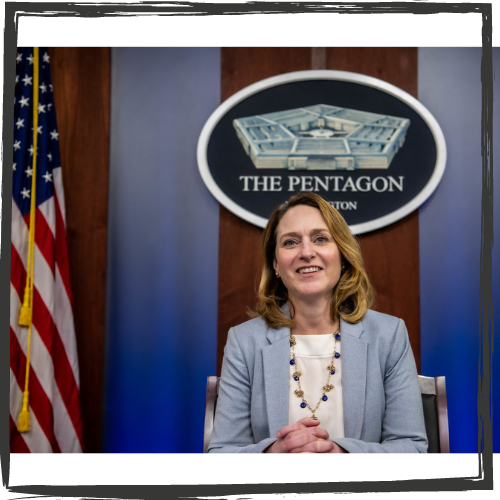By Jory Heckman, Federal News Network
Mental health workforce will ramp up over two years and cover all branches of the military
The Pentagon is looking to hire hundreds of clinicians and mental health professionals in the coming months, as part of the initial cohort of a worldwide workforce to prevent suicide and offer a broad range of wellness services to active-duty personnel.
Deputy Defense Secretary Kathleen Hicks, speaking at a Washington Post Live event, said DoD is building up a “first of its kind” prevention workforce that will address a range of “stress and harm behaviors,” and will eventually reach an end strength of 2,000 personnel. “That could be on financial stability, it could be on food security. It could be on relationship issues. All the factors that go into causing stress and harm behaviors, including suicide,” Hicks said.
Hicks said hiring, onboarding and training the prevention workforce is “at the top of the list” of priorities for Defense Secretary Lloyd Austin. This DoD workforce, she added, is expected to outpace any similar effort led by universities or state governments. “This prevention workforce will be a first of its kind, and we’re going to do it right here in the United States military, because that’s what we owe our people and their families,” Hicks said.
DoD is currently looking to fill several hundred openings on USAJobs.gov for clinicians and mental health specialists who will join this prevention workforce. “You will see openings all across our force, which means all across the world, for those clinicians, mental health care professionals [and] a wide range of specialties that we will bring to bear to try to look at how we support our commanders, who are ultimately responsible for their people and giving them the tools they need to help them,” Hicks said.
Beth Foster, the executive director of DoD’s Office of Force Resiliency, told reporters in October that DoD is looking to hire the initial 400-employee cohort “in the coming months” — although the potential delay of a comprehensive spending deal for fiscal 2023 may slow progress on hiring.

Congress is looking to pass an omnibus spending bill for FY 2023 before the current continuing resolution runs out on Dec. 16. “We have some limitations, because we are under a [continuing resolution] right now, as you know, and that does limit some of our actions that we can take in this space. But yes, we would like to have our initial cohort on very soon,” Foster said in October. She added that DoD will need a few years to hire all 2,000 personnel that will staff up the prevention workforce.
Hicks said DoD, as part of its current prevention strategy, is taking a “community-based approach” to get service members to seek counseling if they experience issues with financial wellbeing, food insecurity, relationship management or sexual assault or harassment.
DoD, she added, is also trying to remove any stigma around seeking out mental health services while serving in the military. “One of the biggest challenges we face in the national security community is fighting the assumption that seeking mental health care will create challenges for your security clearance process,” Hicks said.
Hicks issued a memo in May clarifying that service members seeking mental health services will not “create any challenges” for receiving a security clearance at DoD. “We’re able to support that with data, to demonstrate that, in fact, it’s extraordinarily rare for someone to have that even factor into a set of a set of factors that might lead to security clearance denial,” Hicks said.
Secretary Austin earlier this year also created an independent review commission for suicide prevention. The commission, which includes clinicians and current and former service members, is expected to submit a report to Austin by the end of the year.
Hicks said DoD expects to release a public version of the report in early 2023. “We’re looking at what they might bring forward, areas we might not have thought about that might make an impact as well,” she said.
As part of these efforts, Hicks said DoD is running several pilots meant to reach out to targeted groups within the DoD workforce to address mental health concerns. “We have found through those pilot projects, and places where we’re doing this, [there’s] really good pickup in lowering those barriers to people undertaking help,” she added.
DoD is looking to scale many of those pilots, as part of future prevention efforts. “We want to really scale a lot of those programs across the force there. We’re a large organization. There are pockets of innovation every day working on this issue,” Hicks said.
Hicks leads the deputy’s workforce council, a forum of senior DoD officials focused on the department’s people management, personnel policy and total force requirements. “We can bring in those pockets of innovation, hear what’s working and then scale that across the force, and that brings us much more quickly and more efficiently and effectively to solutions,” she said.

DoD is particularly focused on outreach to service members about a year before they transition out of active duty. As part of this outreach, DoD is looking to make sure service members understand the resources available to them after they leave DoD.
“Life transitions are always stressors, and we definitely think about that period, really about a year before someone leaves the force, to a year after someone leaves the force, as a period where we really want to make sure we’re stabilizing them. Suicide prevention is clearly one of those reasons,” Hicks said.
Article republished with permission from Federal News Network. Read the original article here.


